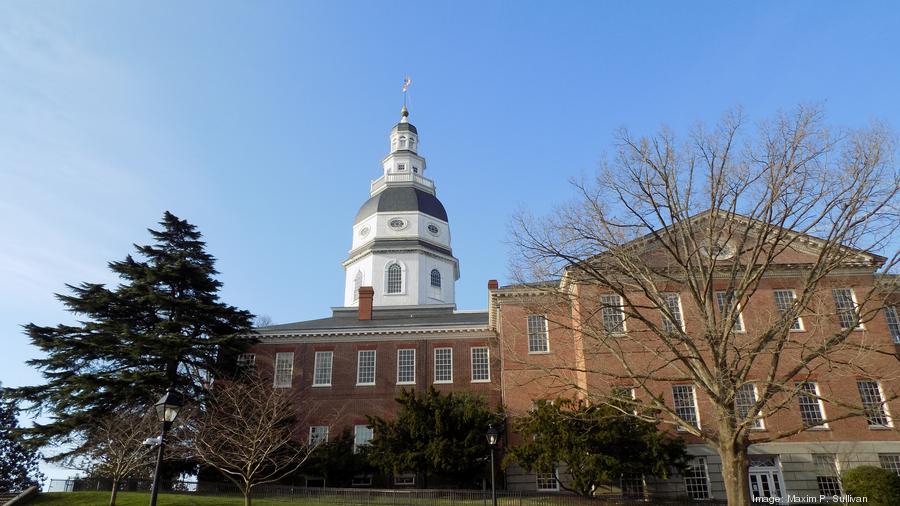Maryland health officials are worried about a second wave of Covid-19 this fall and warned state lawmakers Wednesday that even if a vaccine becomes available, it will be slow to distribute and not widely available to the public.
Health Secretary Robert Neall laid out the Department of Health's priorities for the next eight to 12 weeks during a briefing with the General Assembly's Joint Covid-19 Response Legislative Workgroup. He said the department is working to ensure hospitals have enough capacity to handle what could be a large influx of patients if Covid-19 cases spike again as flu season begins.
"This could be a very challenging time for our health care system," Neall said, noting the symptoms of the flu and coronavirus are similar. "I think while we — I won't say we dodged the surge last spring. ... We could well have a second surge that could be even more serious than what we faced this past spring."
So far, the state has identified 6,700 surge beds and continues to make advance medical tents, intensive care unit modulars and alternate care sites available for Covid-19 patients, Neall said.
Neall also said he's "holding [his] breath" until Oct. 1 to see what Maryland's metrics look like as a result of the Labor Day holiday weekend. Maryland reported 643 new Covid-19 cases and six deaths related to the disease on Wednesday and has seen an upward trend the past few days.
The state’s seven-day testing positivity rate — a measure of the percentage of positive tests over a weeklong period — was 3.44% as of Wednesday. The World Health Organization recommends a positivity rate of 5% or lower for 14 straight days for loosening restrictions. Johns Hopkins University's Coronavirus Resource Center calculates positivity rates differently than the state, and reported the state's positivity rate at 6.44%.
House Speaker Adrienne Jones said she is concerned about the increasing positivity rates because they are "preventing us from getting back to normal." Most school districts are not doing in-person instruction, unemployment remains too high, businesses are struggling and Maryland residents are being shut out from out-of-state travel by other states, said Jones, a Democrat.
“I do not accept that our current situation is the best that we can do," Jones said.
Del. Shane Pendergrass, a Democrat from Howard County, asked if Republican Gov. Larry Hogan's administration has set a goal for getting the state's positivity rate, as tracked by Johns Hopkins, below 5%.
"I am concerned about where we are and where we are headed," Pendergrass said.
In addition to the positivity rate, the state also closely monitors hospitalizations and cases per 100,000 people, Neall said. The tactics the state are currently using — contact tracing, ramping up rapid testing and encouraging people to wear masks and continue social distancing — "are all we can do under current circumstances," he said.
Other Democratic lawmakers said they want to see the state use a "more nuanced" set of metrics and protocols to determine when it is safe to reopen schools. Sen. Paul Pinksy of Prince George's County said most school districts met the goals Hogan announced days before the school year began, but still opened up virtually. He said the state needs to provide more guidance for what to do if multiple students and a teacher test positive in a class, or if 10 to 20 students in an entire school test positive.
"Without common set of protocols... it’s very concerning about actually returning kids if we don’t know how to handle bumps in the road that are going to happen," Pinsky said.
Much of the briefing also focused on what the state will do if the federal government approves a Covid-19 vaccination. While President Donald Trump said during an ABC News town hall Tuesday that a vaccine could be available "within weeks" — shortly before the November presidential election — state officials said there are logistical challenges that would prevent it from becoming widely available anytime soon.
Dr. Jinlene Chan, acting deputy secretary of public health services, said two doses of the vaccine may be necessary and they would have to be administered weeks apart. The vaccines might also need to be stored in "ultra-cold" temperatures.
The first shipment will consist of a limited number of vaccines, Chan said. High-risk populations and health care workers will get first priority, though even completely vaccinating those groups "will take some time."
"We know that we're not going to get, initially, sufficient quantity to be able to deploy it to out to our entire high-risk population immediately," Chan said.
Sen. Clarence Lam, a Howard County Democrat and physician, said the state needs to start working now to acquire supplies related to the vaccine like freezers and syringes. He said the health care industry is already starting to see supply chain shortages of syringes and Johns Hopkins is trying to procure freezers. He cautioned states will also be competing with one another for the supplies.
"You're going to be fighting against other states trying to compete [for] tens of millions of syringes that are needed to be able to vaccinate the population," Lam said. "You need to start looking at that now.
